Introduction
Mastering the perfect spaghetti sauce recipe is both an art and a skill that brings delicious rewards. Whether you’re new to cooking or an experienced home chef, homemade spaghetti sauce is a game-changer, offering unmatched freshness and the joy of customization. Unlike store-bought versions, it’s free from preservatives and artificial flavors, allowing you to tailor the taste, texture, and ingredients to suit your preferences. From choosing the finest tomatoes to blending the right herbs and spices, creating your own sauce is simpler than you think. This guide will provide step-by-step instructions, expert tips, and creative ideas to help you craft a spaghetti sauce that’s rich, flavorful, and unforgettable.
The Ultimate Guide to Spaghetti Sauce Recipe: A Step-by-Step Journey

There’s something magical about a simmering pot of homemade spaghetti sauce recipe. The tantalizing aroma, the rich flavors, and the satisfaction of crafting something from scratch make it an unforgettable experience. In this comprehensive guide, we’ll take you through the art of making the perfect spaghetti sauce recipe—one that rivals even your favorite Italian grandmother’s recipe.
What Makes a Spaghetti Sauce Recipe Special?
A Brief History of the Spaghetti Sauce Recipe
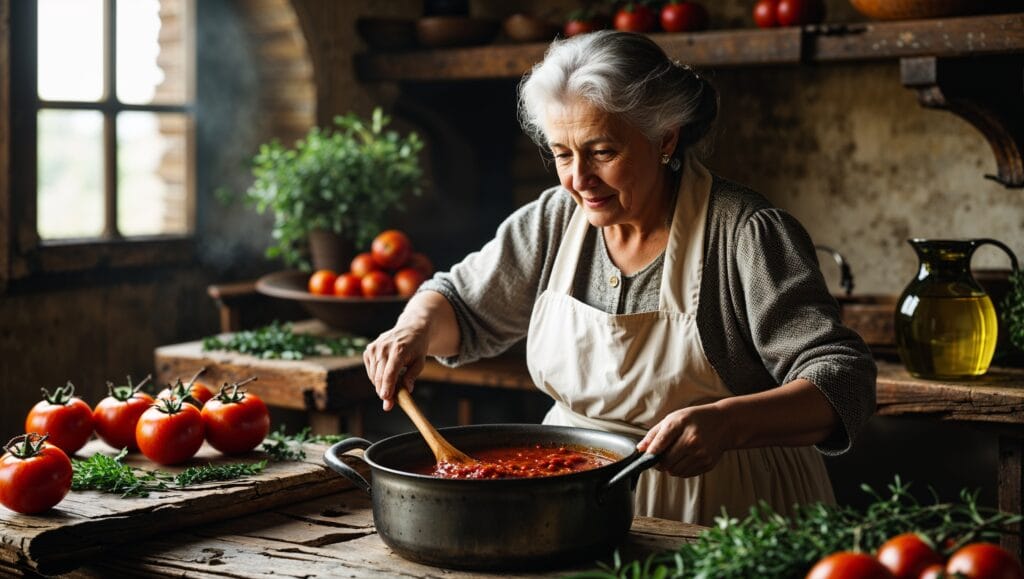
The spaghetti sauce recipe, or “sugo” as it’s known in Italy, has a rich history steeped in tradition. It originated in southern Italy, where early sauces were simple, featuring fresh tomatoes, olive oil, and fragrant herbs. Over time, regional adaptations created a variety of styles—from hearty Bolognese sauces to lighter, herb-infused recipes from Naples—each with its own unique story and flavor profile.
Why Homemade Spaghetti Sauce Recipes Are Better
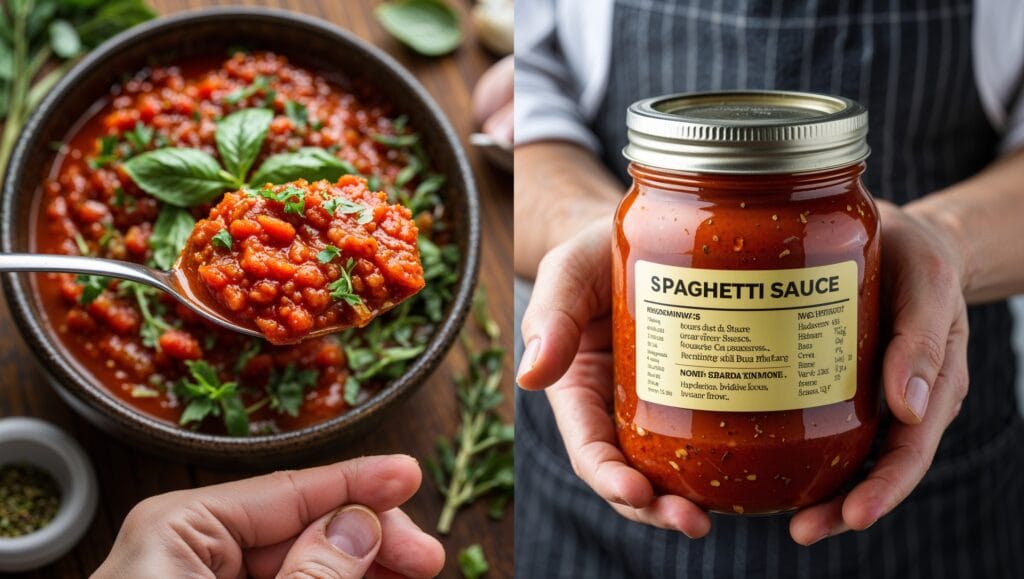
Homemade spaghetti sauce recipes stand out for their unparalleled freshness and adaptability. Unlike store-bought options, they are free from preservatives and artificial ingredients. Crafting your own sauce allows you to tailor the flavors to your preference, whether you enjoy it chunky, smooth, sweet, or spicy. The ability to control every ingredient ensures a healthier, tastier dish.
Key Ingredients for a Perfect Spaghetti Sauce Recipe
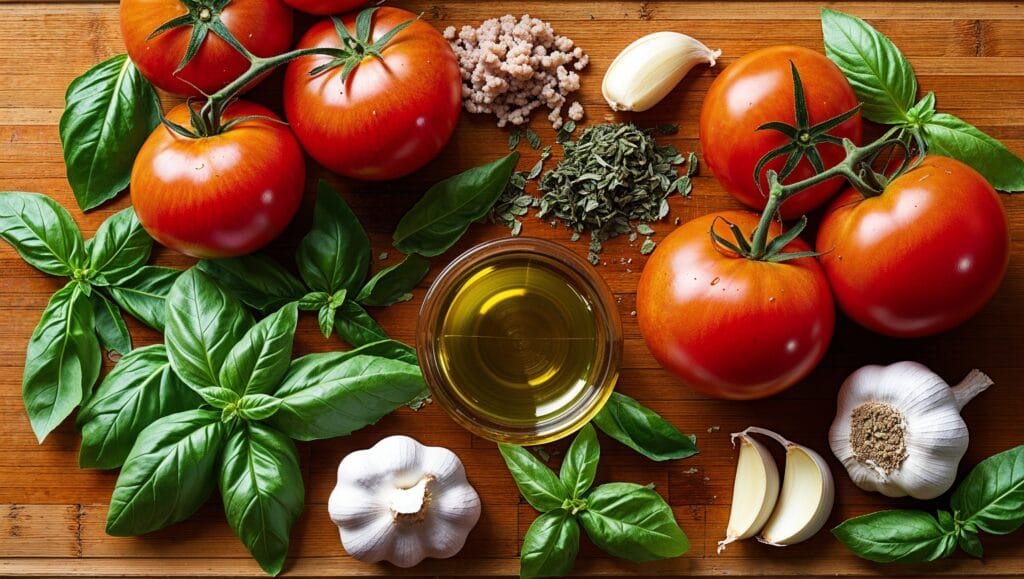
The success of a spaghetti sauce recipe depends on using quality ingredients:
- Tomatoes: The heart of the sauce; San Marzano tomatoes are highly recommended for their sweet, less acidic flavor.
- Herbs: Basil, oregano, and parsley add aromatic depth.
- Garlic: Brings a bold and savory punch to the mix.
- Olive Oil: Enhances texture and provides a rich undertone.
- Meat (Optional): Ground beef, sausage, or pancetta for a hearty twist.
- Sugar (Optional): Balances acidity and enhances natural sweetness.
The Basics: Understanding Spaghetti Sauce Ingredients
Tomatoes: The Core of Every Spaghetti Sauce Recipe
High-quality tomatoes are essential for the perfect spaghetti sauce recipe. While fresh tomatoes shine in season, canned tomatoes like San Marzano varieties are excellent year-round. Crushed, diced, or pureed—choose the texture that suits your sauce preference.
Herbs and Spices: The Secret to Flavorful Spaghetti Sauce
Fresh herbs such as basil and parsley add brightness to your sauce, while dried oregano lends an earthy touch. A pinch of red pepper flakes adds a subtle heat, and a bay leaf simmered in the sauce brings complex depth.
Proteins and Add-Ins: Customizing Your Spaghetti Sauce Recipe
Personalize your spaghetti sauce recipe with a variety of additions:
- Vegetarian: Include mushrooms, zucchini, or bell peppers for extra texture.
- Meat: Ground beef, sausage, or pancetta creates a hearty base.
- Seafood: Add shrimp or clams for a coastal-inspired twist.
How to Make Spaghetti Sauce from Scratch
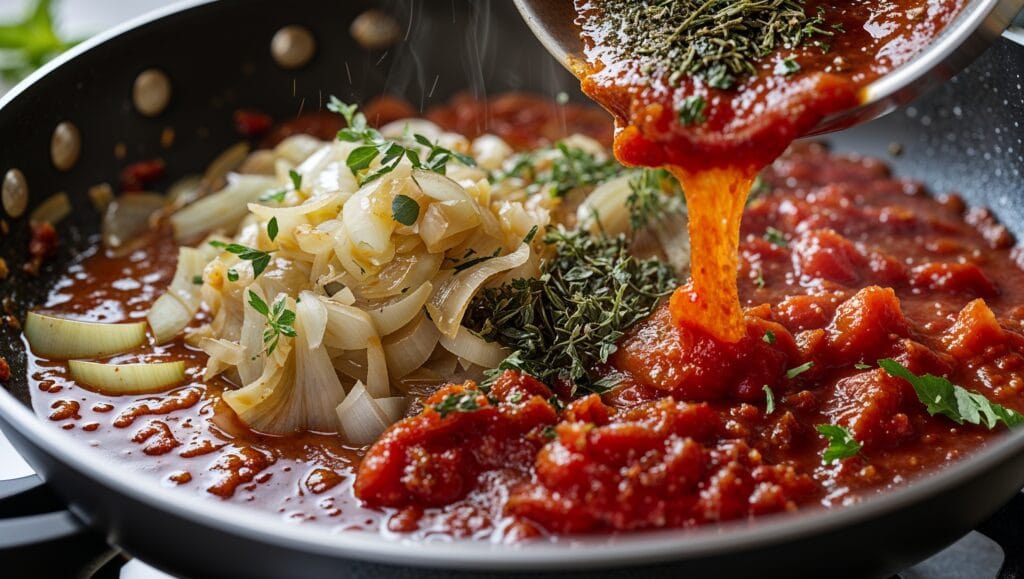
Step 1: Gather Your Spaghetti Sauce Ingredients
Here’s what you’ll need for a simple yet delicious spaghetti sauce recipe:
- 2 tablespoons olive oil
- 1 medium onion, finely chopped
- 3 garlic cloves, minced
- 1 can (28 ounces) of crushed tomatoes
- 1 tablespoon tomato paste
- 1 teaspoon dried oregano
- 1 teaspoon sugar (optional)
- Fresh basil leaves, torn
- Salt and pepper to taste
Step 2: Sauté the Aromatics
Heat olive oil in a large saucepan over medium heat. Add the chopped onion and cook until translucent, about 5 minutes. Stir in minced garlic and sauté for 1-2 minutes, being careful not to burn it.
Step 3: Add Tomatoes and Simmer
Add crushed tomatoes, tomato paste, oregano, and sugar (if using). Bring to a simmer, then reduce the heat to low. Cook uncovered for 20-30 minutes, stirring occasionally to prevent sticking.
Expert Tips for the Best Spaghetti Sauce Recipe
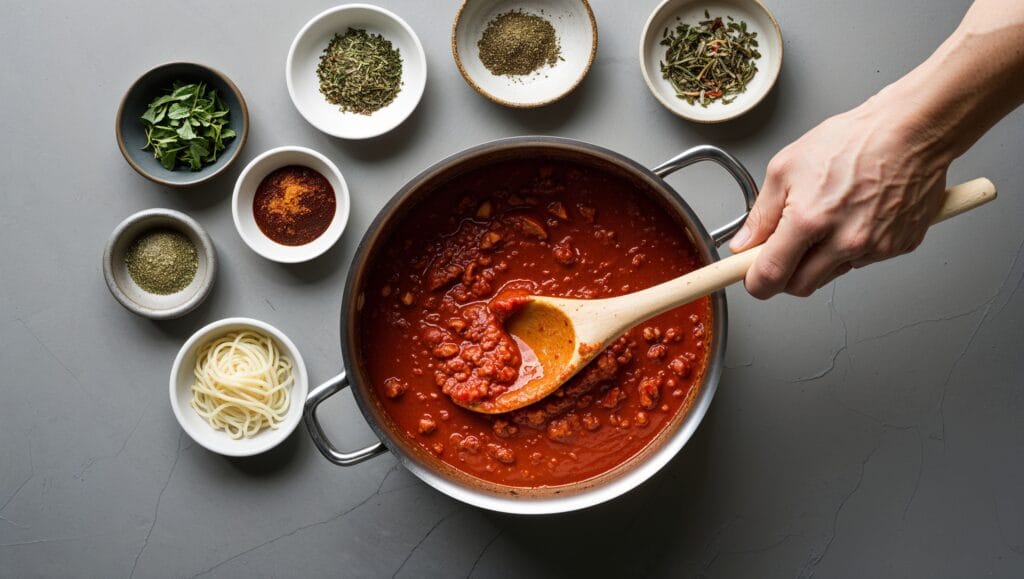
Tip 1: Don’t Rush the Simmering Process
The best flavors develop slowly. Allow your sauce to simmer for the full duration to meld and deepen its taste.
Tip 2: Season Gradually
Taste as you go. It’s easier to adjust seasoning incrementally than to fix an overly salty sauce.
Tip 3: Blend for a Smoother Texture
For a velvety sauce, use an immersion blender or a traditional blender. Just be cautious when blending hot liquids.
Common Mistakes to Avoid
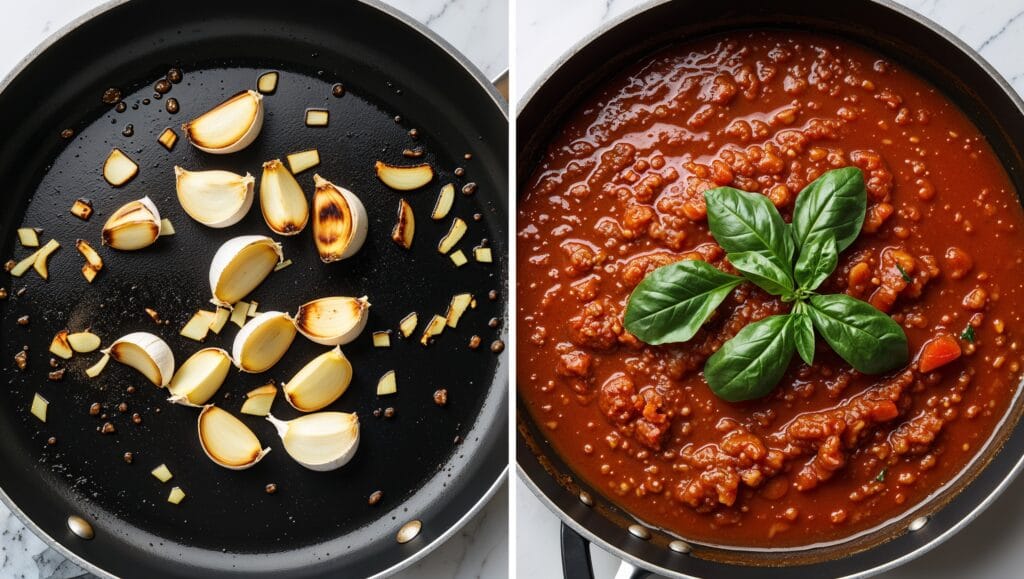
Overcooking the Garlic
Burnt garlic turns bitter, so add it just before the tomatoes to preserve its robust flavor.
Skipping Sugar When Needed
If your tomatoes are overly acidic, a pinch of sugar balances the flavors without making the sauce sweet.
Using Inferior Tomatoes
Your sauce is only as good as your tomatoes. Always opt for high-quality fresh or canned varieties.
How to Serve Your Spaghetti Sauce Recipe
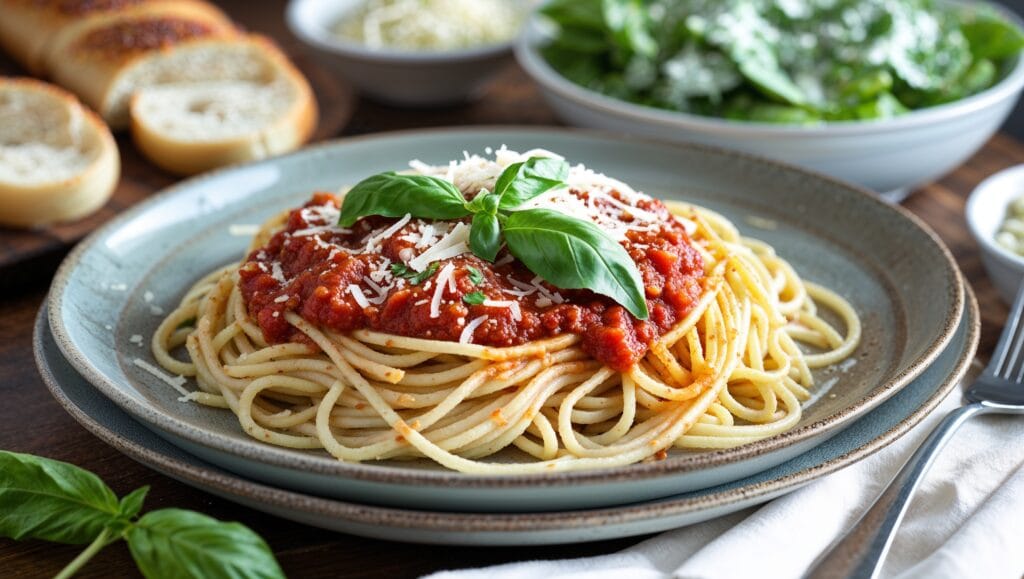
Pairing with Pasta
This versatile spaghetti sauce recipe pairs beautifully with spaghetti, fettuccine, penne, or rigatoni. Save a bit of pasta water to mix with the sauce for better adhesion.
Complementary Sides
- Garlic bread
- Caesar salad
- Roasted vegetables
Storing and Freezing Leftovers
Store leftovers in the fridge for up to 5 days or freeze for up to 3 months. Thaw overnight in the fridge and reheat gently.
Conclusion and Final Thoughts
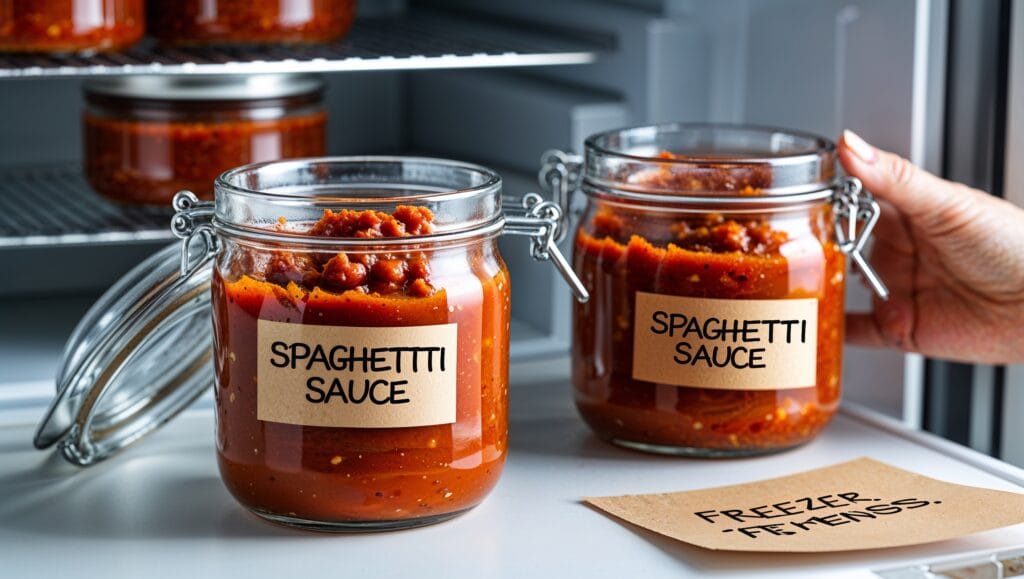
Crafting the ultimate spaghetti sauce recipe is a rewarding experience that combines timeless tradition with your unique touch. Whether for a family dinner or a special occasion, this guide equips you to create a sauce that delights every palate. So, gather your ingredients, take your time, and enjoy the journey to mastering this culinary classic.
FAQs
Can I make spaghetti sauce without tomato paste?
Yes! Simmering the sauce longer will achieve a similar richness.
What’s the best way to thicken spaghetti sauce?
Simmer uncovered to reduce liquid or add a cornstarch slurry.
Can I use fresh tomatoes instead of canned?
Absolutely. Blanch, peel, and crush them before adding.
Is sugar necessary in spaghetti sauce?
Not always. Add sugar only if your tomatoes are overly acidic.
How can I make my spaghetti sauce spicier?
Incorporate red pepper flakes or diced chili peppers for extra heat.



